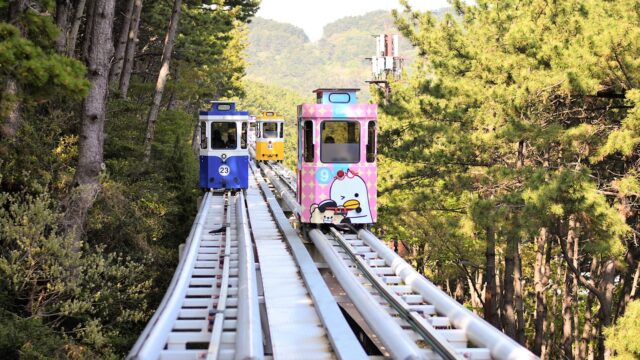The two palaces – Changdeokgung and Changgyeonggung – are located just next to each other, so do combine your visit to both. In my opinion, they both are worth your time, although Gyeongbokgung is often the only palace some visitors choose to visit.
On a side note, both of these palaces are featured in a number of K dramas, including Kingdom and Red Sleeve.
Changdeokgung and the Secret Garden
Price: 3000 won + 5000 won for Secret garden, free for over 65 to the palace only and discounts for juniors
Admission times: every day, except Mondays, 9am-6pm
Map: This map may help you see the locations of each building you would want to see.
Depending on how much time you have in Seoul, here are best suggested itineraries:
See the detailed tips and itineraries for visiting Seoul.
See the best suggested 1-day itinerary for visiting Seoul.
See the best suggested 2-day itinerary for visiting Seoul.
See the best suggested 3-day itinerary for visiting Seoul.
Tickets
The tickets for the palace itself can be gotten easily on the day of visit. The ticket office is on the left side of the Donhwamun gate. If you are visiting other palaces as well, you may consider buying the Royal Palace pass, which includes admission to 4 palaces and Jongmyo shrine. The pass costs 10000 won, so it’s definitely worth it even if you are only visiting Gyeongbokgung (3k won), Changdeokgung (3k won) and its Secret garden (5k won). The pass lasts for 3 months.
Keep in mind that as with other palaces, admission here is free if you wear a hanbok.
You can’t visit a Secret Garden without a guided tour. You need to book even if you have the Royal Palace Pass. There are 4 English language tours per day (3 in winter). There are 100 tickets per tour, out of which 50 are sold online, while 50 – at the spot on the day. You can book tickets on the official website, however it doesn’t always work unfortunately. I mean it literally doesn’t open sometimes. The online tickets become available exactly six days before your visit date. However, I signed in immediately at 10am 6 days before we wanted to visit, but all tickets were sold out.
50 tickets for each tour are sold at the palace ticket office. We made sure to get to the counter by 9am in order to secure our tickets for the tour. We had to queue about 20 minutes before we were able to get our tickets, but we actually managed to get them for 10.30am. This way we could maximize our time, visited the rest of the palace before 10.30 and then joined the tour. You can risk going later in the day as well and you may manage to still get tickets, although I wouldn’t count on that.
Free Tours
If you like tours, you have an option to join free guided tours of the palace at 10.15 and 13.15 (double check the times at the ticket office or the gate). You just have to show up and join the tour. However, it’s first-come first-served, so be there somewhat earlier to make sure you can join.
Exploring the Changdeokgung Palace
The history of the palace dates back to the beginning of the 15th century. Changdeokgung Palace complex is the UNESCO World Heritage site. This was the second Royal Palace built in the city under Joseon dynasty. Like with other palaces, the grounds were destroyed and restored several times. However, unlike in Gwanghamun, some of the buildings here still remain from the times of their restoration in 17th century.
To enter the palace, you present your ticket at the Donhwamun gate. The gate is one of the few remaining buildings here from 1607.
Next, walking from Donhwamun gate you will see a stone bridge on your right. This is Geumcheongyo – oldest bridge existing in Seoul.
Farther Injeongmun gate leads to the main Injeongjeon Hall (which will be located on your left side after you pass the bridge. This served as the throne hall with highest level ceremonies, including coronations. The building was destroyed several times and the current one was rebuilt in the 20th century.

The main hall is followed by Seonjeongjeon hall, which served for daily business. Huijeongdang was used, as the king’s living quarters, while Daejojeon, as queen’s residence.
Before the entrance to the Secret garden, you will see the Seongjeonggak– building which served as a pharmacy. Somewhat past you will see Nakseonjae – another residence building built in the 19th century for the king’s consort.
One note – in this palace, as well as the others – don’t expect to see many items from the old times. You will see the thrones, maybe a couple of fans and the folding screens/room dividers (those were special and had various uses, including protection from wind, separating space, separating the kings, when they didn’t want to be seen). The items that were used in the palaces are mostly in different museums, particularly in the National Palace Museum.

Secret Garden Tour
Visiting Secret Garden (Huwon) is wholeheartedly suggested by most people. This is one of the most famous places in Seoul, which people don’t want to miss. If you love tours, the tour guide (who was dressed in a hanbok) was quite interesting, telling various stories from the lives of royalty over centuries.
The garden looks at its best in Autumn I believe. At least the photos with red are beautiful. However, when we visited in spring, it wasn’t that amazing. Our impression may also have been affected by he fact that we hate guided tours, as following a huge group of people around is not our idea of nice exploration. That said, unless you have very limited time in Seoul, I think you should do this at least once.
Keep in mind that the tour does involve climbing up and down, so if you can’t do that, inform your guide, which will direct you how to leave the tour earlier, before you will have to climb. But honestly, it’s not worth it in this case and I would skip it, if I was bringing my mom, who has difficulty climbing any hills.
The garden was used by the Royal family and was particularly important for women members of the family, who were not allowed to leave the palace. Various feasts and tournaments were held in the garden.
This map shows where to find Secret Garden entrance. Show up 5 minutes before your scheduled tour time. Once you pass the gate, you will see people gathering.
First stop on the tour is Buyongji pond – a rectangular pond surrounded by three pavilions. This is certainly a very picturesque place. Yeonghwadang Pavilion served for scholarship and poetry. Plus, state examinations were held here. Buyongjeong – a smaller pavilion with two legs in the pond was dedicated to celebration, while Juhamnu – the biggest pavilion here, served as a library with first floor used for storing books, while second – as a reading space.
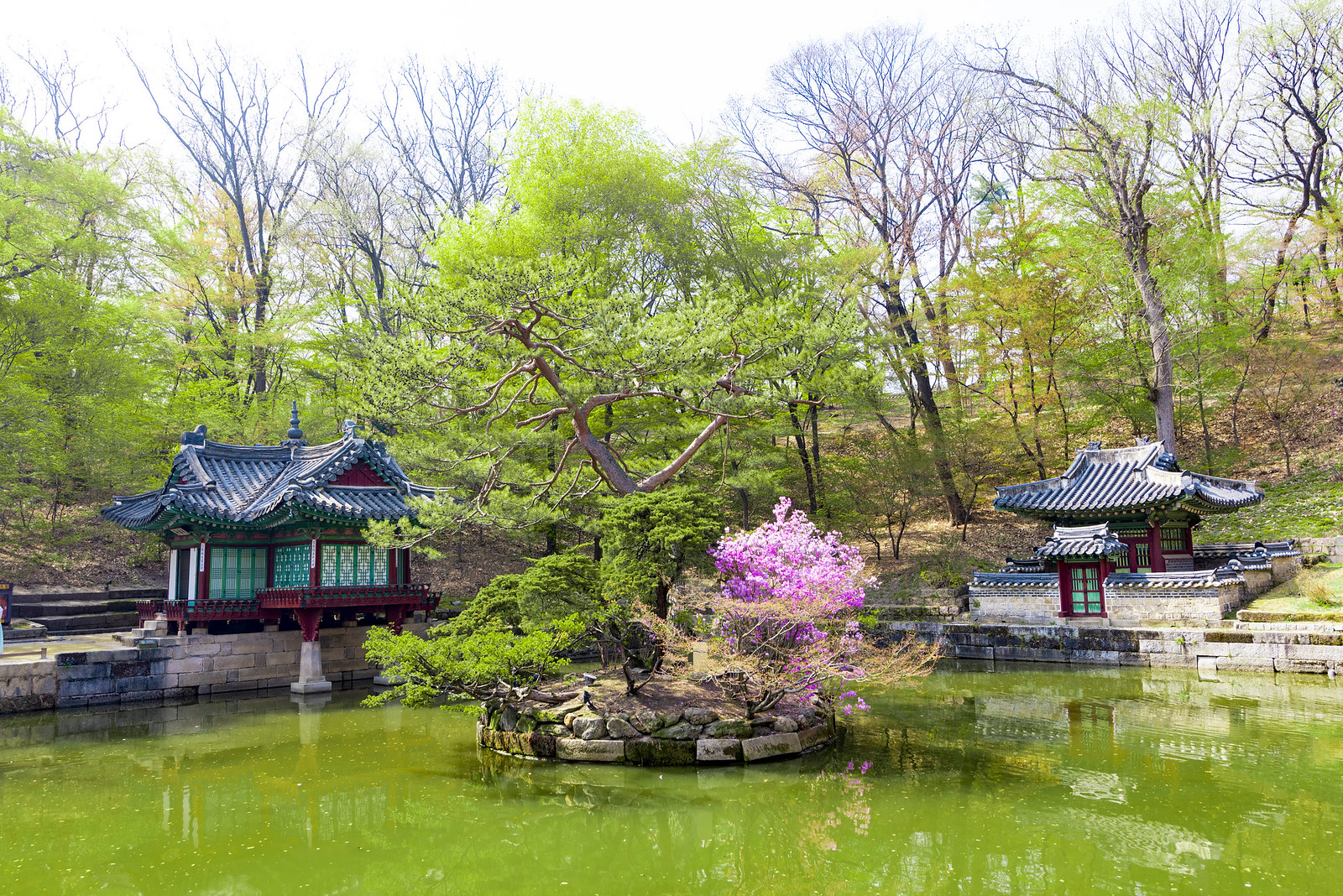
Next is a small pond with Aeryeonjeong Pavilion. Honestly, this spot was not memorable for me.
Next you will visit Yeongyeongdang complex – a more recent part built by the end of the Joseon dynasty reign. The complex was used for different events, as well as for educational purposes.
After a lot of climbing up and down, you will reach the small pond with Jondeokjeong Pavilion – a hexagonal small building. There were a few other, not so memorable spots as well on the way.
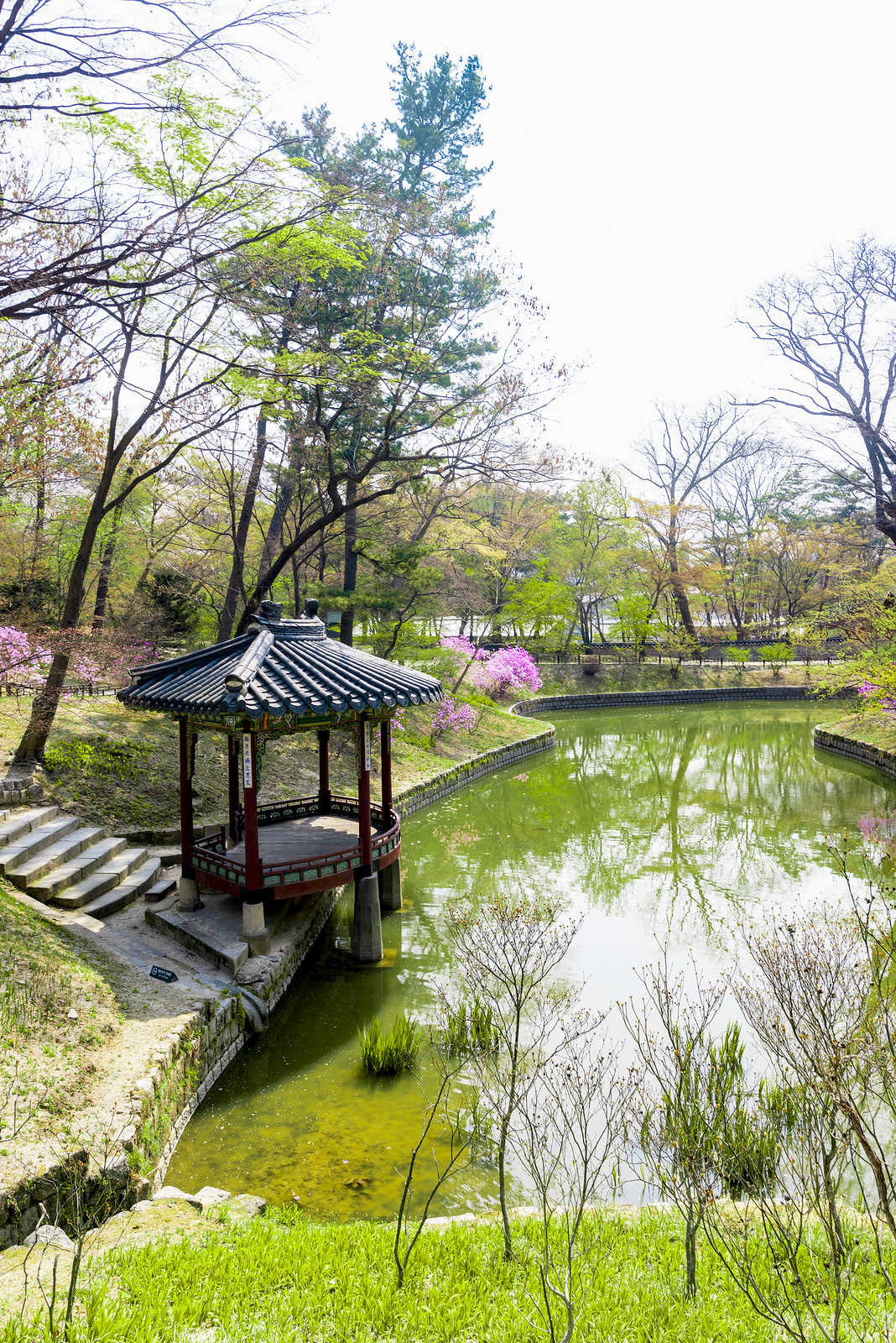
After you are done with all of the buildings, the tour guide will take you to Donhwamun gate. Especially if you have already completed the Changdeokgung palace and would like to visit Changgyeongung next, do not follow till the end, make sure to ask her and get out from the gate you see before the stairs (where you started the tour), otherwise you will have to climb up and down to reach Donhwamun gate which is absolutely unnecessary for you to do. We didn’t know this, so we followed till the end and then had to pass through Changdeokgung palace buildings a second time to reach the entrance to Changgyeonggung.
Changgyeonggung Palace
Price: 3000 won, free for over 65 to the palace only and discounts for juniors
Admission times: every day, except Mondays, 9am-9pm
Map: This map may help you see the locations of each building you would want to see.
If you are visiting Changgyeonggung immediately after Changdeokgung, the entrance is next to the entrance to Secret Garden. If you are visiting this palace separately, then you can enter from Honghwamun Gate.
Tickets
The tickets for the palace can be purchased either at the Donhwamun gate, near the entrance from Changdeokgung palace, or at the Honghwamun gate. If you are visiting other palaces as well, you may consider buying the Royal Palace pass, which includes admission to 4 palaces and Jongmyo shrine. The pass costs 10000 won.
Exploring the Changgyeonggung Palace
This palace is actually highly underestimated. Most people only visit Gyeongbokgung and/or Changdeokgung completely ignoring other palaces. However, I personally very much enjoyed it. Granted buildings are similar, but this palace grounds have different feel, more cosy. Besides, it has big grounds, if you climb uphill and explore.
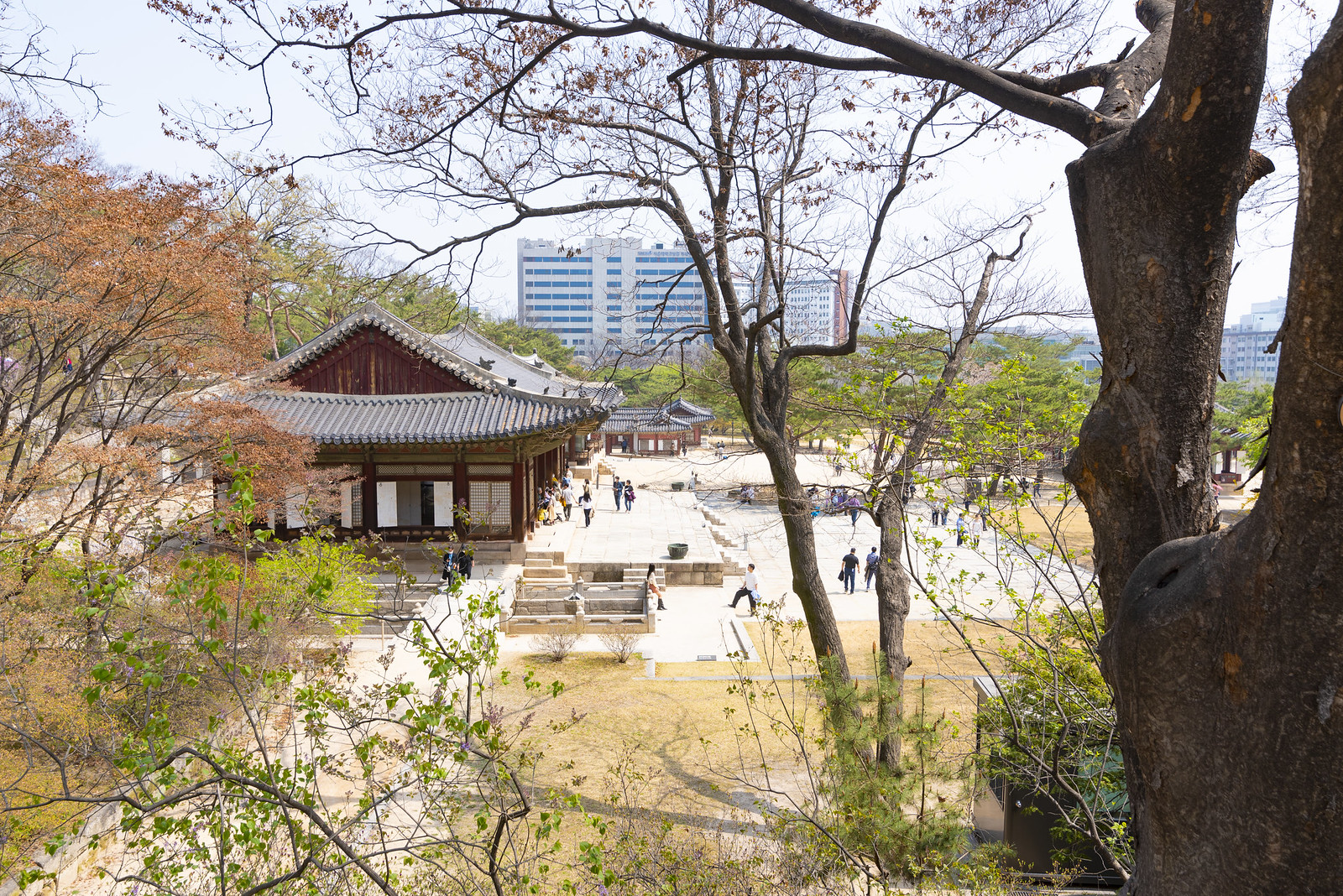
The palace was built in the 15th century by famous King Sejong for his elderly father. Unlike the two major palaces though, this one never served, as a main palace. It was mainly used for residential purposes by royal family. The buildings were destroyed several times and finally rebuilt in the 20th century.
This palace is also known for a famous killing of prince Sado in 18th century – son of king Yeongjo. He became extremely cruel due to mental illness. He was executed by his father through being locked in a chest full of rice, where he suffocated. By the way, this story is depicted in the popular K-drama Red sleeve, which follows Sado’s son – King Jeongjo.

If you are coming from Changdeokgung and want to explore the whole palace, walk uphill (instead of going down the stairs) to the gardens and pond. Here you will find Grand Greenhouse, as well as Chundangji pond with small octagonal seven-storey pagoda.
After exploring this area, walk down by stairs to the main palace complex. You can also skip the above-mentioned part and directly go downstairs upon entrance from Changdeokung palace side.
Moving downstairs you will see three halls – Tongmyeongjeon, Yanghwadang, Yeongchuneon House – that served as king’s and queen’s residences. They look more or less similar in style. Moving on, the Hwangyeongjeon Hall served as prince’s living quarters. The Haminjeong Pavilion had the purpose of scientific talks.

Binyangmun Gate which will lead you to the main hall is interesting and different from others we had seen. It’s columned structure is worth a closer look. This gate was the entrance to the royal family’s private residence area and therefore thoroughly guarded. Sungmundang Hall to the side of the gate was used, as the king’s study. While the Munjeongjeon Hall next to it is known for the Prince Sado’s tragic story.
Myeongjeongjeon Hall is the main throne hall of the palace, where the official and ceremonial events, including weddings took place. Raised pathway to it, as in case of other palaces was only used by the king. His attendees had to walk to the sides of him and not touch the path. Finally you will reach the Honghwamun Gate, which is actually the main entrance to this palace.
If you are visiting in cherry blossom season or in Autumn, have a look around the green area, where Gwancheondae Observatory stands. We enjoyed lovely cherry blossoms here.
See also:
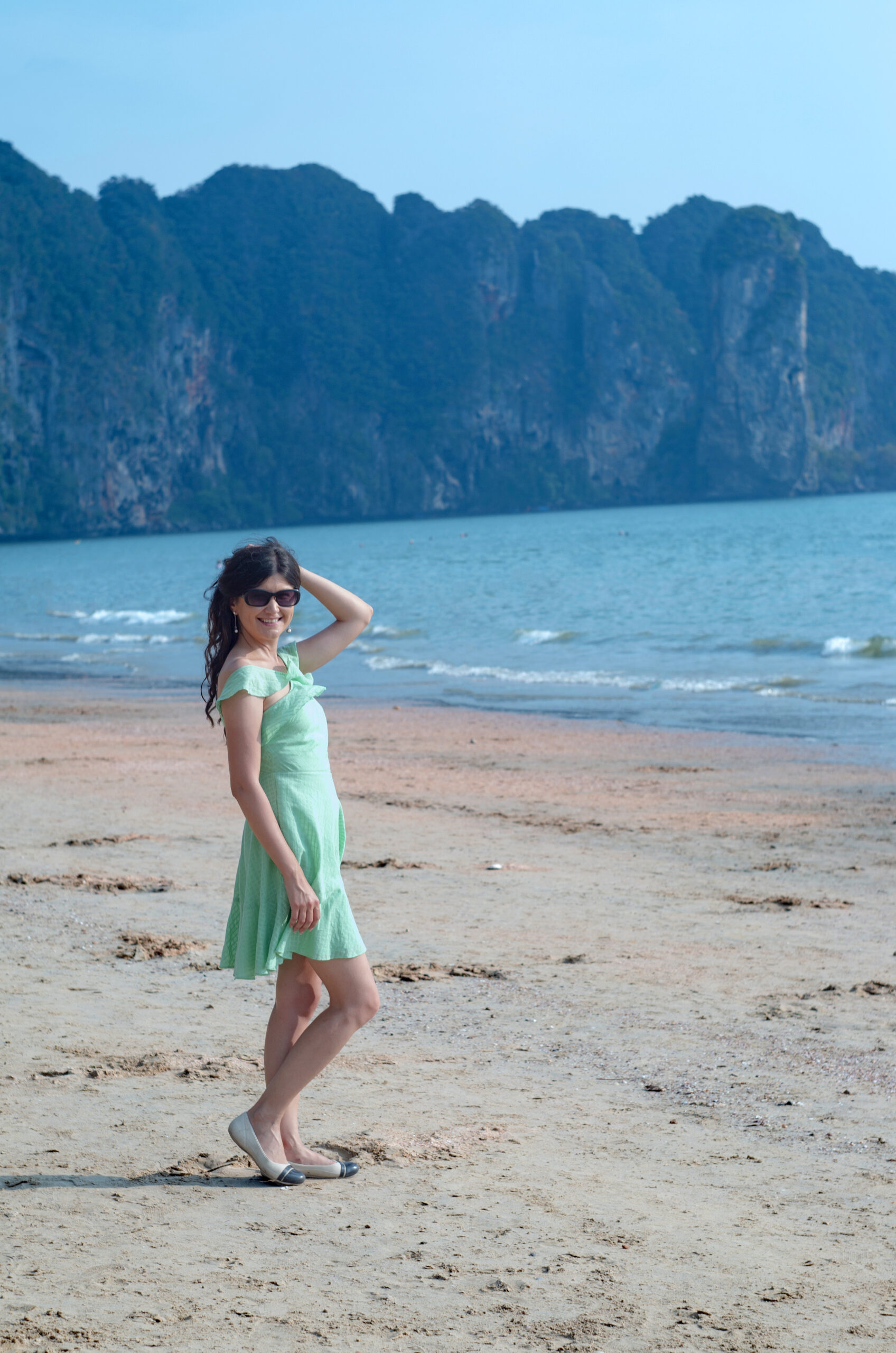
Hello I am Ket,
A traveler, planner, and sweet tooth behind Hit the Road Ket.
Travel isn’t just my passion – it’s a lifeline for my mental health. Having lived in three cities and explored 60 countries (and counting!), I created this blog to share my experiences, smart tips, and itinerary advice with fellow travel lovers. I’m all about making the most of limited time, finding scenic routes, and turning every trip into something memorable – coffee in hand, of course.


